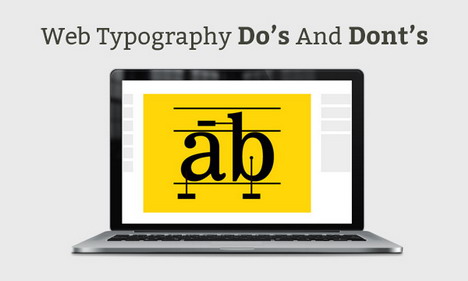10 Eminent Ingredients of a High-Quality Web Copy
Every year, several million people and companies roll out new blogs and websites. Due to the fierce competition and narrowed supply of reader attention, most of these new sites fail. If even a little chunk of your content seems to be mislaid or off from the inception, nothing will pay off.
A better perception of the coexisting web content architecture, style and optimization level will allow your copy a much-improved possibility of getting perceived, read and endorsed to others:
1. Truthful Headline & Strong Hook
The headline is the key. If it doesn’t create a sense of interest and value, no one will ever click on your post to read it. The hook is the juicy/interesting angle of the story that reaches out and snags people’s attention – pulling them in to read the copy. Every good story has a hook… but most of the times you have to brainstorm and research intense to find it.
Create your headlines as gripping as possible – but make sure to avoid phenomenalism because your headline acts like a written promise. If the content piece you created doesn’t deliver up-to the expectations you lifted up through the headline – you’ll get clicks but you’ll quickly burn your visitors leaving a bad impression and a reaction full of anger about your brand.
2. Beautiful Typography
Most default blog and content-management themes come with very basic typographic styles. This was okay a few years back when blogs were new… but now your text has to be formatted with style, readability, and originality in mind – or else your ideas won’t be taken seriously. This excellent article on content optimization explains how many experts recommend using the font Serif – but I’m a fan of Arial.
Your site’s header logo needs to be professionally designed with a graphics program. Then the text typography needs to be formatted in CSS. All of the critical text (HTML) elements of your content – bold, italics, header 1, header 2, header 3, ordered lists, unordered lists, links, already clicked-on links, blockquotes, definitions – need custom styles. Tweak out the subtleties of spacing and font decoration until you get a look you’re very proud of. (CSS is an essential skill if you want to blog with style.
3. Professionally-formatted Photos and Illustrations
Unless you’re an A-list’er or some Pulitzer-prize winning writer – too much plain text is downright intimidating. Having one or more images in the text will make your content easy on your readers’ eyes (and brain). Get images from Flickr Creative Commons, stock photo sites, or your own digital camera. A simple chart or illustrations can make a post look many times more professional. For the need of relatively easy-to-use graphics software, I suggestOmniGraffle for OS X or Fireworks. Finally, try to plug your images with captions, drop shadows, or CSS “frames” to make them look professional.
4. Subheaders and Bulleted / Numbered Lists
Many people will be reading your content at work and they may be in a tremendous hurry to get the gist of it. Also, most users prefer to quickly scan web content diagonally, rather than actually “read” it.
Having bold, nicely CSS-styled subheaders (i.e., H2, H3, H4 tags in XHTML) make your content easier to grok and less intimidating to zip through in a hurry. Lists (i.e., UL & OL tags) help people soak in important facts that would otherwise sail right under their radar.
5. Clear, Lean & Engaging Writing
If your writing is murky, verbose, or filled with errors -your content won’t get shared and recommended. Review the classics like The Elements of Style – and also check out more modern primers like Guide to be a truly Great Blogger (By Site123) and the Copywriting 101 series (By Copy Blogger).
6. A Unique Perspective
There’s way too much fresh, the high-quality content being created for stale or recycled stuff to have much chance. If you just echo stuff that has already been written or publish lists of links – you become really easy to ignore or safely unsubscribe to.
As Maki explained in one of his articles –
“Detailed, unique content immediately stands out on its own, even without extensive marketing efforts. People don’t just want to be informed, they want to better grasp a topic in all its nuances. The joy of consumption lies not only in the skimming of a news story but the processing of new perspectives to enrich a personal worldview or professional need.”
7. No Pagination, Forced-Registration or Intrusive Ads
Some corporate Web publishers like to take an article like “Top 10 North American Snowboarding Resorts” – and split it up into 10 pages to increase page views and make more ad impression money. This kind of “company-first” thinking doesn’t fly with the modern social media culture, who demands quick access to your information and minimal hassles. Also, pagination harms your SEO efforts.
Forced-registration will kill any social media potential, and the much-hated interstitial ads will give your content some serious negative points when it comes to viral potential. Lastly, make sure your ad network doesn’t permit deceptive schlock that insults the intelligence of 99.9999% of your users:
8. Links to Sources and Additional Information
High-quality web content has text with hyperlinks to sources, proof, and additional resources. This takes your content to a higher level of credibility than “just some guy’s opinion.”
9. Copy that Converts
Copy that doesn’t produce conversion is of no use for you. Your page should include compelling CTAs to make visitors click on them.
The wording of CTAs should be clear, concise and action-oriented and results in goal-completion like Email Subscription, Download research paper, leave their comment or quote for a service through filling the lead form.
10. Information about the Author
Who wrote the story?… An anonymous troll? A highly-respected expert? Some guy in Philippines you hired on Fiverr?
Linkerati like top bloggers, librarians and “real” journalists need to know. If they can hold someone accountable to a story… they’re more likely to feel secure blogging about it, linking to it, or quoting facts from it. Having the author’s full name in the by-line, with a link to their biography (containing a clear photograph) will help score major credibility points.
























































